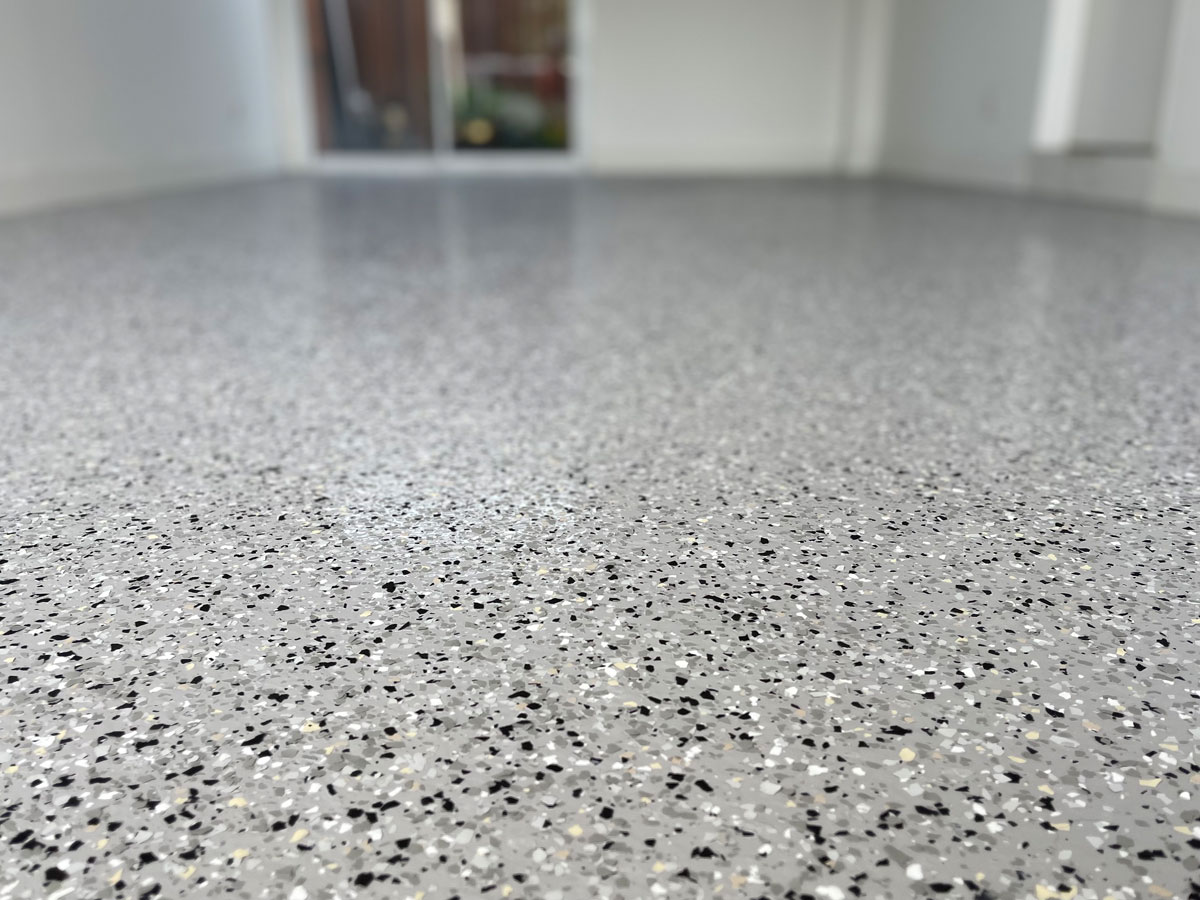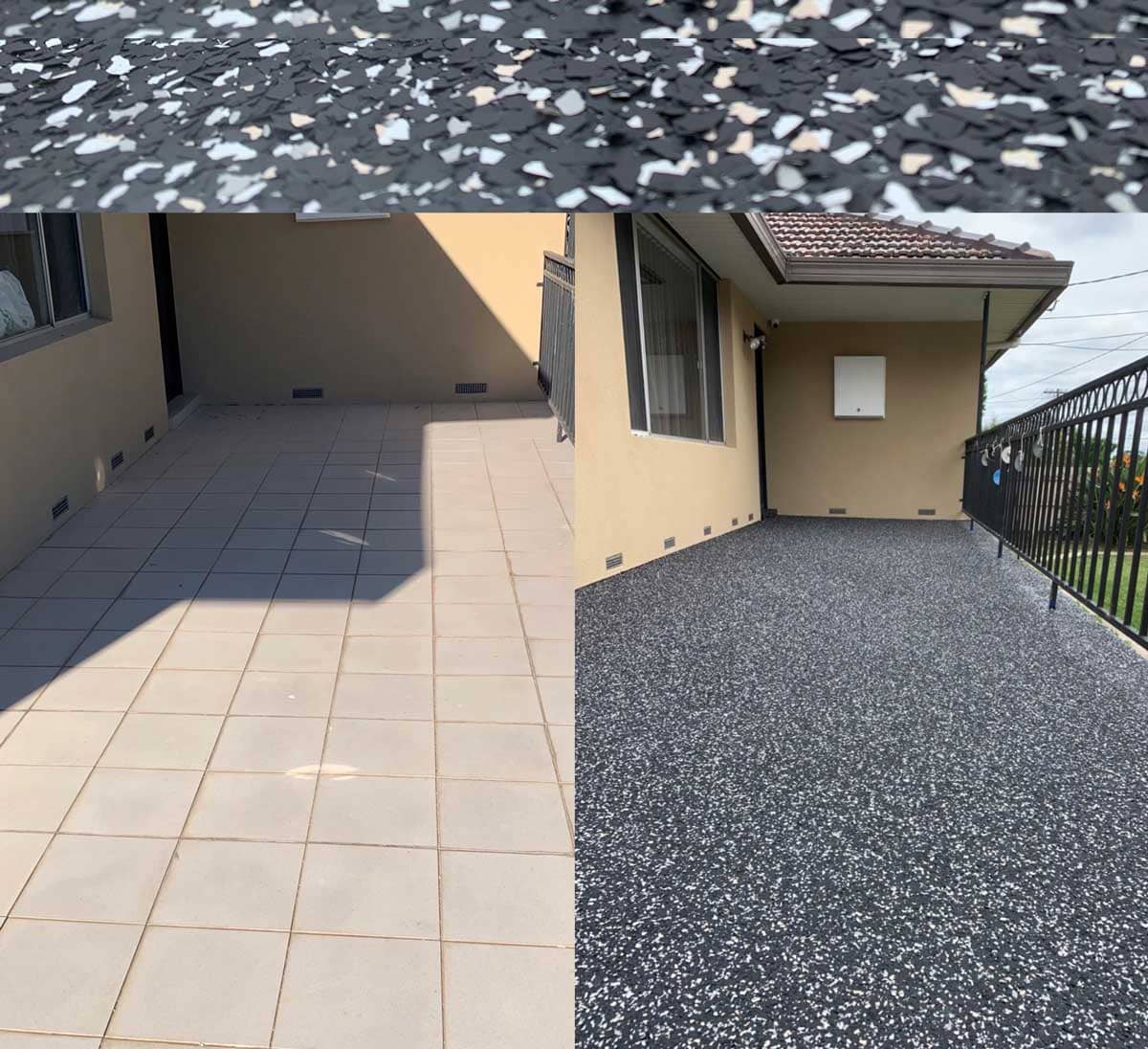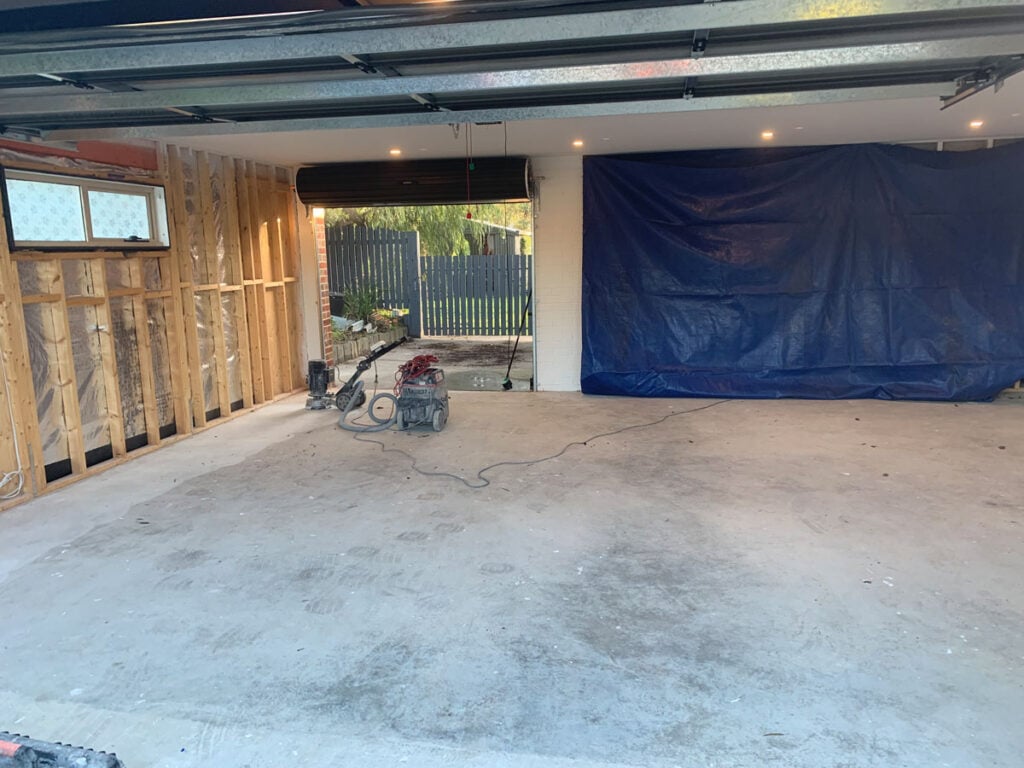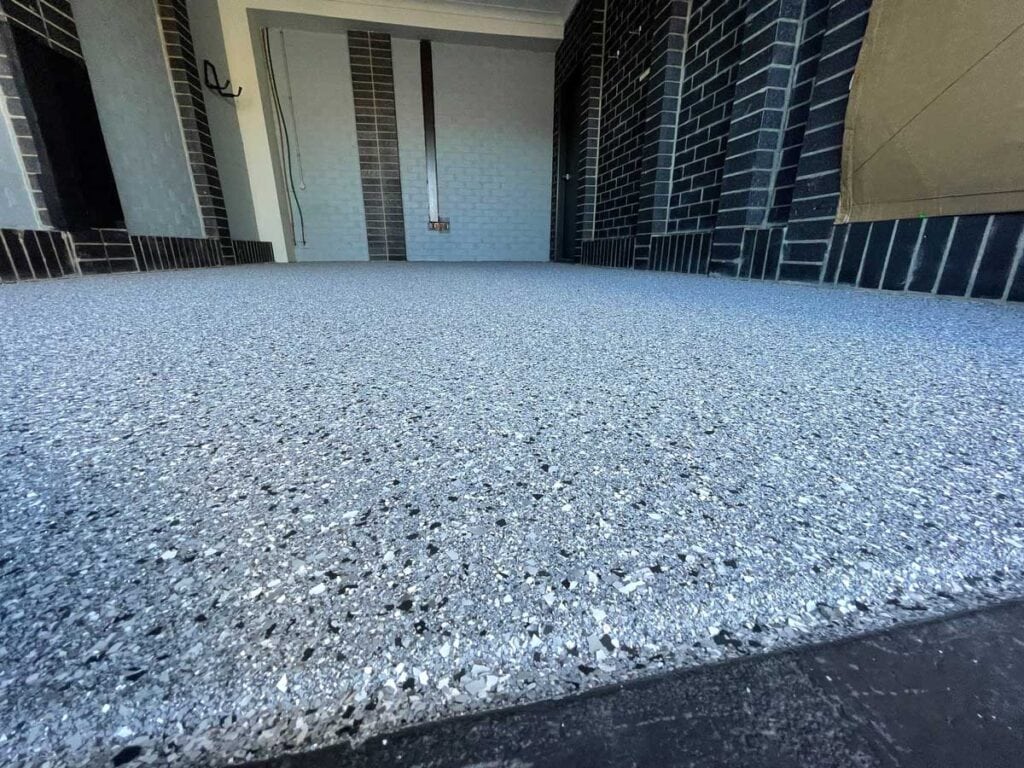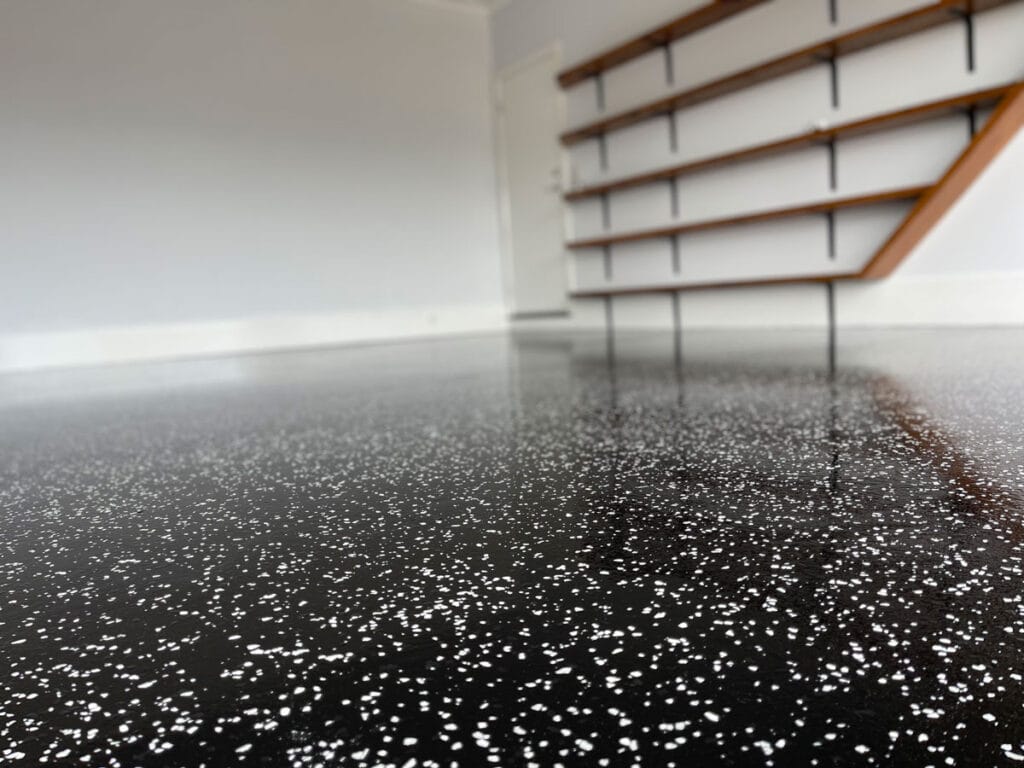Epoxy is a super-bonding and waterproof adhesive that is familiar to those who are new to DIY projects. Also known as a sort of polymer that, when coupled with other chemicals, forms an industrial adhesive that is utilized in the manufacturing of automobiles and airplanes, as well as the production of excellent flooring and worktops and in the completion of other house repairs and improvements. When people are renovating, engineering, or building new bathrooms, one of the most common questions they have is whether or not there is an epoxy that can be utilized on the shower floor.
The application of an epoxy coating provides outstanding durability in the bathroom, particularly when it is utilized in the shower. When applied as a finish to the shower floor, epoxy will provide you with a coating that is dependable, waterproof, safe, and easy to maintain clean for a period of up to 20 years. Other benefits include the fact that it is straightforward to clean.
Users have the option of selecting a clear patina to keep the tile design on the shower floor, in addition to choosing from a selection of color finishes. The second primary application for epoxy on a shower floor is as a substitute for cement grout in areas that require grouting. Epoxy is a great repair to use whether you are putting in brand new tile or trying to restore the grout in your existing tile.
Can You Epoxy A Shower Floor
It is really necessary to carefully read over the instructions before choosing epoxy resin. The application of this watertight sealer must be done properly. It is essential to have an accurate time estimate for the drying and curing process of the epoxy coating. The use of epoxy on the floor of your shower offers a number of advantages for long-lasting use. Even a very little coating applied as a final touch can offer some additional protection. Epoxy's value as a waterproofing agent makes it a worthwhile investment for do-it-yourselfers.
An increasingly common and risk-free method for finishing a tiled shower floor is to use epoxy as a sealer, decoration, and grout for the tiles. It is the material that is considered to be the most valuable and appreciated when it is used in a bathroom setting, particularly when there is a steam shower component present.
The bathroom, which is full of moisture and warm air, requires a waterproof material that is reliable and predictable, didn't attract bacteria, won't be hurt by cleaning sanitizers, and won't be affected by other ecological build-ups.
Epoxy As A Sealant
The installation of epoxy flooring in the bathroom will serve multiple purposes: it will prevent water damage in the future, the substance itself will literally operate as a sealant, and it will prevent corrosion. Imagine the resin becoming more rigid as a result of the chemical composition of the polymer molecules being treated.
The end product is epoxy which starts out as a liquid but hardens into a solid. And once it has been placed on the floor of the shower, the epoxy will take up to a week to cure, which means it will become hard, in order to produce the seal that each shower needs. In addition, the entire waterproofing and sealing of the space are made possible by the curing process of the epoxy coating, which takes at least seven days to finish.
Epoxy As A Protectant
Epoxy is a material that many homeowners want to keep in their home repair toolkit after it has been applied and allowed to cure. This form of resin protectant is non-porous and also resistant to water, as was mentioned earlier. Epoxy has a number of advantageous properties, including resistance to the growth of bacteria and fungi, protection against urine and powerful cleaning agents, and anti-corrosion properties.
Epoxy As The Décor Inspiration
Bathrooms are becoming increasingly popular spaces in which do-it-yourself interior designers choose simple designs that can be adapted to a variety of settings. The most popular kinds of epoxy resin on the market today each offer a color wheel with a variety of options for use on shower floors and walls.
Epoxy is a product that can be finished to look like concrete or granite, metallic finishes of lavish golds and coppers, or bright statement hues such as Mediterranean blues, Moroccan teals, and greens. It is a product that can be used to create a wide range of looks, and it is a popular product that can do so.
Epoxy As Grout
Epoxy, in contrast to the usual grout made of cement, is a resourceful option for the floor of your shower when it is utilized in this capacity. In the same vein, this material possesses excellent waterproof, durability, and stain-resistant qualities. Moreover, epoxy grout is dependable, which means that the tiles on your shower floor will not fracture, discolor, or even contract as a result of using it.
Epoxy grout forms a strong bond with shower floor tiles and can also be used to revitalize grout that has become cracked, damaged, or degraded.
When compared to cement grout, epoxy grout has the characteristic of hardening much more rapidly, which makes it somewhat more difficult to apply. The epoxy grout should be applied in stages, as recommended by the specialists. In addition, as was suggested previously in this piece of writing, we strongly urge you to study all of the directions in their entirety and have a thorough comprehension of the types of tile materials that work best when combined with epoxy grout. Epoxy grout, on the other hand, can ultimately be rewarding.
Epoxy As A Shower Floor Fix-It
If the floor of your bathroom has seen better times, it may be time to give it a renovation by applying a cover of epoxy resin. This will give it a more modern appearance. Utilize the polymer material to water-resistant large or minor cracks within the shower base, as well as seal fractures in the shower pan that have occurred.
Epoxy grout can be used over cement grout to provide additional protection and to fill up any holes that may have formed in the grout as a result of wear and tear over the years. A more extensive epoxy job may be required if the grout in your shower needs to be completely redone or if the tiles on the floor of your shower are loose.
When working with epoxy, it is common for inexperienced do-it-yourself homeowners to try to speed up the process. Consider the following information on your epoxy application checklist; there are a few things to keep in mind.
Mix The Two-Component Epoxy System Properly.
If you mix the two main components together correctly, you won't end up with a sticky floor and the resin won't cure properly.
Prime And Seal Surface Thoroughly
It is important to prevent bubbling and air from entering the epoxy coat. Clean well. Allow it to mature in a careful manner.
Avoid Applying Epoxy On Porous Surfaces
Epoxy should NOT be used on porous tiles such as ceramic or any other natural stones, such as travertine, marble, slate, basalt, limestone, and many others. This is the recommended course of action.
Prepare Desired Surface
The application of epoxy requires that the surface be properly prepared beforehand.
To begin, make sure all of your surface materials are spotless.
Remove any metal hardware, such as a drain, scrape away any loose paint or rust, thoroughly clean the surface and wait until it is totally dry before applying the coating.
How To Renew A Shower With Epoxy Paint
It may be an expensive undertaking to repair a shower or tub surround that has grown discolored or scarred with the passage of time. Refinishing the bathtub or shower by painting it or resurfacing it is one possibility to consider in the event that an entire replacement is not a viable choice. Resurfacing, which is essentially the procedure of painting the tub or shower with multiple tub-and-tile epoxy paint, is often performed by professionals who have expertise in this field and are trained to do so. However, a homeowner who is concerned about their finances can decide to tackle the project on their own.
It is claimed that do-it-yourself materials for resurfacing, which are frequently sold as shower sets rather than paint, are effective on surfaces made of ceramic tile, porcelain, fiberglass, acrylic, cast iron, or steel. In truth, they work best on fiberglass and acrylic, and some users have reported underwhelming results when applied to ceramic tile and metal.
Despite this, these products for do-it-yourself projects can be found at a variety of locations, including home improvement centers, paint stores, and online stores.
Before You Begin
Before beginning the project, it is important to make sure that your expectations are reasonable. Be aware that the use of these solutions is limited, and that some people who pursue this choice end up feeling somewhat disappointed with the outcomes, as well as exhausted from the effort and work needed. Even while the majority of homeowners are capable of doing this project on their own, the best approach to ensure that the work is finished to professional standards is to hire a firm or a professional.
In order for epoxy painting or refinishing to be effective, the surfaces to be painted or refinished need to be extensively prepared, and the resulting appearance is typically not quite as flawless as it could be. However, epoxy tub-and-tile paint or refinisher may be a choice for a bathroom that is used infrequently or as a stopgap remedy in a bathroom that will likely undergo more extensive remodeling in the not-too-distant future. Both of these scenarios are possible.
Keep in mind that decorating a shower is a long-term commitment before you embark on this journey. In the future, there will most certainly be more extensive work done on the shower, including its removal and replacement. Paint made with epoxy will adhere very strongly, and you won't be capable of removing it without causing damage to the shower's components in the process.
In the event that you do experience certain failures, such as cracked, bubbled, or peeling paint, you will be able to restore those locations; but, in order to do so, you will need to purchase a full paint kit. This is due to the fact that epoxy paint, once it has been prepared, must be applied within a few hours. You can't just go and grab an old can of epoxy paint from the basement if you need to touch anything up.
What You'll Need
Equipment / Tools
- Screwdriver
- Adjustable and drain wrenches
- Metal brush
- Knife-bucket utility
- A putty knife or paint scraper
- Respirator (if required)
- A paint jug
- A rolling tray
- Paintbrush (fine-bristle varnish brush)
- 1/4-inch roller cover for a roller
- Using a mixing bit on a power drill (optional)
Materials
- 400/600-grit wet/dry sandpaper
- Scrub sponges
- Lime-A-Way cleaner
- 100% isopropyl alcohol (if needed)
- Abrasive cleaner
- Rags
- Two-part epoxy refinishing paint
- Bleach
Instructions
Remove Hardware
Using the appropriate screwdrivers and other plumbing equipment, remove any metal drains and components from the plumbing system. It is not necessary to remove the faucets; however, the escutcheon plates, cover plates, and tub spouts should also be removed so that access can be gained to all surfaces.
Clean and Repair the Surfaces
Sandpaper or a wire brush can be used to remove any loose paint as well as corrosion. If there is any damage, fix any chips or cracks using a patching solution that is appropriate for the wall material, such as Liquid Steel or Bondo. If there is any damage, fix it. Scrub any unclean or discolored surface using an abrasive powdered cleaner and a scouring sponge to get it completely clean. After rinsing with fresh water, you should wait for the surfaces to become totally dry.
Use an abrasive pad and a substance that dissolves minerals, such as Lime-A-Way, to scrub the surface. After cleaning the surfaces once, you should rinse them and then do it again if necessary. To clean all of the caulk, you can do so with a utility knife, a putty knife, or a paint scraper. For the best results when cleaning caulked surfaces, use isopropyl alcohol. When it comes to bonding, it is imperative that all surfaces be spotlessly clean and free of any impurities.
Scuff The Surfaces
Sand the entire area to a smooth finish with wet-and-dry sandpaper with a grain of 400. (Be sure to read the instructions that come with the refinishing kit; certain kits may call for grittier sandpaper.) Sanding the surface in this manner both roughens it and makes it feasible for the epoxy restoration paint to bind to the surface. Perform this phase completely, as it is widely considered to be the stage that requires the greatest effort and time overall in the project. To remove the residue left by sanding, you can use a vacuum cleaner or a clean cloth. Before beginning the painting process, remove any remaining traces of dust from any surfaces by using a tack cloth.
Mix The Epoxy Paint
The steps involved in cleaning a bathtub or shower and applying epoxy repair paint can vary marginally from one brand of paint to the next. A specific product offered by Rustoleum is known as the Specialty Tub and Tile Refinishing Kit.
However, in most cases, you will want to combine the two components—the resin and the catalyst/hardener—in a bucket that has been thoroughly cleaned. Utilizing a power drill equipped with a mixing bit will produce the greatest possible outcomes. If the paint seems to be excessively thick, you can slightly thin it out by adding no more than ten percent of isopropyl alcohol to the mixture. After being thoroughly combined, the paint will keep its workability for approximately six hours under typical conditions.
Apply The Epoxy Paint
Use a varnish brush of high quality with fine bristles or a roller with a nap of 1/4 inch to apply a full layer of paint to the surfaces of the bathtub and shower. Brush in one direction to provide a smooth texture, and feather the edges to avoid direct lines between brush or roller strokes. Brushing in one direction also ensures that the surface is evenly coated. Try to limit the amount of brushing and rolling you do. The objective is to achieve a smooth and even coating; you shouldn't be concerned about achieving full coverage with the initial layer.
Apply Second Coat
After allowing the first layer of paint to cure for at least an hour, proceed to apply the second layer. Allow to air dry over the night. Isopropyl alcohol should be used to clean the brushes. Examine the surfaces once the paint has had a chance to dry for a full night. In the event that it is required, make a fresh batch of paint and add a third layer of epoxy. In most cases, two applications are sufficient, but if the shower is in poor condition, you could need to apply three.
Finish The Project
Before reattaching any hardware, make sure to give the paint at least three days to fully cure. To complete the project, apply a new tub-and-tile caulk in a color that is comparable to the enamel paint.
How Epoxy Refinishing Paint Works
Epoxy paint for tubs and tiles is typically purchased as a set that includes two cans of paint material, labeled as part A and part B. The first component is a resin, while the second is a hardener or catalyst. When the two components are brought together, there is a chemical reaction that takes place, and the mixture promptly begins to solidify or cure. Epoxies acquire their indestructible and tenacious properties as a result of a chemical reaction. On the other hand, traditional paints dry not through a chemical process but rather through a reaction called evaporation.
Can You Use Epoxy Paint On Shower Walls?
The tub or shower surround can be painted using an epoxy shower wall, which is a stunning and low-maintenance option. Because FX Poxy is entirely seamless and hydrophobic, there is no need to be concerned about water damage or the need for cleaning. It is recommended that the original walls, tiles, and brick be left in their current state.
Can You Use Epoxy Paint On Shower Walls?
The tub or shower surround can be painted using an epoxy shower wall, which is a stunning and low-maintenance option. Because FX Poxy is entirely seamless and waterproof, there is no need to be concerned about water damage or the need for cleaning. It is recommended that the existing walls, tiles, and brick be left in their current state.
What Is The Best Paint For A Shower?
Paints with a high-glass, semi-gloss, or satin texture are recommended for use in shower areas because they cure a finish that is harder, more resistant to moisture, and simpler to clean than conventional paints. It would be in your best interest to opt for a paint that also contains a substance that prevents mildew from growing.
Is There Waterproof Paint For Shower Walls?
It is recommended to use latex or acrylic paint for the ceiling of a steamy bathroom, but for the tiles in the shower, you will need a water-resistant paint that is based on epoxy in order to make a proper connection with the less porous surface of the shower. When painting the area around your shower, you need therefore adhere to a separate set of requirements.
How Do You Buy Epoxy
The majority of home improvement stores carry a selection of epoxy products that can be used for the installation of shower flooring. It is possible for you to go right in and select an epoxy shower kit, which includes countertop epoxy, a fast coat, a roll of fiberglass mesh, and an epoxy thickener.
Then, in order to produce a number of distinct bathroom designs, you can personalize your shower floor by using liquid epoxy colors that are readily available. The dyes provide you with the creative tools to picture natural stone looks such as granite, marble, and quartz, as well as glitter, and dramatic color splashes of neon.
Slippery Flooring
Epoxy flooring has a slippery finish because of its shiny appearance. Epoxy producers who are at the forefront of the industry offer a paint that prevents slipping. It is a good idea to use non-slip epoxy paint as an alternative to unsightly shower mats or stickers that have been specifically designed to prevent slipping.
Nowadays, do-it-yourselfers are responsible for roughly 70 percent of all home upgrades. Epoxy is one of those materials that are simple to purchase and use, and it has the potential to transform your bathroom into a beautiful, secure, and watertight space. Epoxy resin is a material that can be relied on upon without question for use in shower flooring. Before beginning any project at home, you need to do some study to ensure that you will get the best possible outcomes that you will be able to live with.
Can I Paint The Walls Of My Shower?
Painting a bath can be challenging, but it can be done; even though the shower area offers some difficulties, it is still possible to paint a bathroom. A paint that is "normal" cannot endure the day-to-day rigors of humid conditions, splashing water, and soap scum, which can make it peel, discolor, and mildew. These rigors can cause damage to paint that is not protected by a paint that is more resistant.
Can You Use Epoxy In Shower?
Epoxy, which is a fantastic material, can be used to create the floor of a shower.
In addition to this, it allows for a great deal of personalization, which contributes to its longevity and adaptability. Epoxy finishes are long-lasting, sanitary, and healthy, in addition to being easy to clean. In addition, epoxy finishes are simple to clean. In addition, epoxy can be utilized in the finishing process as well as the grouting process.
What Kind Of Paint Should You Use In A Shower?
It might be difficult to select a paint color; nevertheless, you should avoid flat paint because it can give the impression of being simple and contemporary.
A finish with a semi-gloss or satin sheen will cure a tougher surface and will be more resistant to moisture than a finish with a high-gloss sheen. If you like, you can also scrub them to make them clean. Your choice of paint ought to come equipped with a mildewcide already.
Is There A Waterproof Paint For Bathrooms?
Recent releases from Sherwin Williams, Benjamin Moore, and other significant paint producers include bathroom-specific paints with antimicrobial ingredients that stop the growth of mold and mildew. In this regard, bathroom paint is also waterproof. Other major companies have also recently implemented bathroom-specific acrylic paint.
FAQs About Epoxy
Can You Use Epoxy Paint On Shower Floor?
Paints made of epoxy are ideal for use on surfaces that are frequently exposed to water, such as shower floors, bathtubs, countertops, and other similar areas. If your floor is made of tiles, you always have the option of using a combination of latex and epoxy paint to help sort out the glazes that are on the tile surface.
Painting a shower floor is an excellent, low-cost way to maintain your bathroom's interior design as well as add to the room's aesthetic appeal. Painting your shower with epoxy paint is an excellent method to revitalize it, which is something that many people fail to do. Make sure the floor is clean, and if you are handy around the house and can paint it yourself, purchase the correct paint for the job; otherwise, contact a professional.
How Many Coats Of Epoxy Do I Need For A Shower?
In the event that it is required, make a fresh batch of paint and add a third layer of epoxy. In most cases, two applications are sufficient, but if the shower is in poor condition, you could need to apply three. In most cases, two applications are sufficient, but if the shower is in poor condition, you could need to apply three.
Before reattaching any hardware, make sure to give the paint at least 3 days to fully cure. To complete the project, apply a new tub-and-tile caulk in a color that is comparable to the epoxy paint.
How Do You Paint A Shower With Epoxy?
In the event that it is required, make a fresh batch of paint and add a third layer of epoxy. In most cases, two applications are sufficient, but if the shower is in poor condition, you could need to apply three. Before reattaching any hardware, make sure to give the paint at least three days to fully cure. To complete the project, apply a new tub-and-tile caulk in a color that is comparable to the epoxy paint.
What Kind Of Paint Do You Use On A Shower Floor?
It is recommended that latex enamel paint be utilized while painting a bathroom or shower walls that are contained within a shower enclosure. Instead of eggshell or flat paint, choose a high-gloss or semi-gloss finish for the greatest possible results from your painting project.
In contrast, the water-repellent characteristics of paint with a glossier finish will be significantly improved. Paints made of epoxy are ideal for use on surfaces that are frequently exposed to water, such as shower floors, bathtubs, countertops, and other similar areas. If your floor is made of tiles, you always have the option of using a combination of latex and epoxy paint to help sort out the glazes that are on the tile surface.
How Thick Does Epoxy Need To Be?
The majority of epoxies are formulated to self-level and produce a coat that is 1/8 of an inch thick.
Is it of a sufficient thickness for you? If you want the epoxy layer that you make to be more substantial, you are going to need a lot more of it. If you want a thinner coat, you will obviously require less product, but you generally shouldn't experiment with that option anyhow.
Typically, epoxy flooring lasts 2 to 3 years in heavy traffic. Commercial properties—like garages, restaurants, or factory spaces—with lots of daily foot traffic can expect this experience. However, with proper care and maintenance, your epoxy flooring may last much longer.
- Strong Application Fumes. During the epoxy application process, wet epoxy gives off an unpleasant smell. ...
- Long Curing Time. ...
- Slippery When Wet. ...
- Economical Flooring Choice. ...
- Resistant to Damage. ...
- Weather-withstanding. ...
- Aesthetically Pleasing. ...
- Protects and Decreases Wear & Tear.
Extremely safe – Epoxy is a very safe coating for your hard floors. It's slip resistant, shock resistant, and less abrasive than concrete and other types of industrial flooring. ... It can also withstand heat of up to 200 degrees, making it a better choice than most other types of flooring when it comes to fire resistance.

